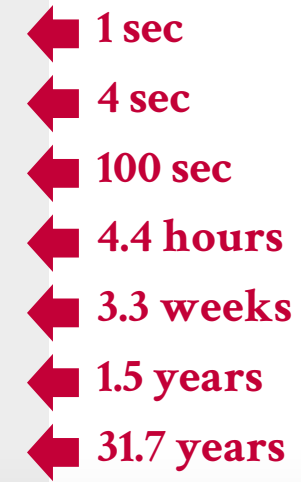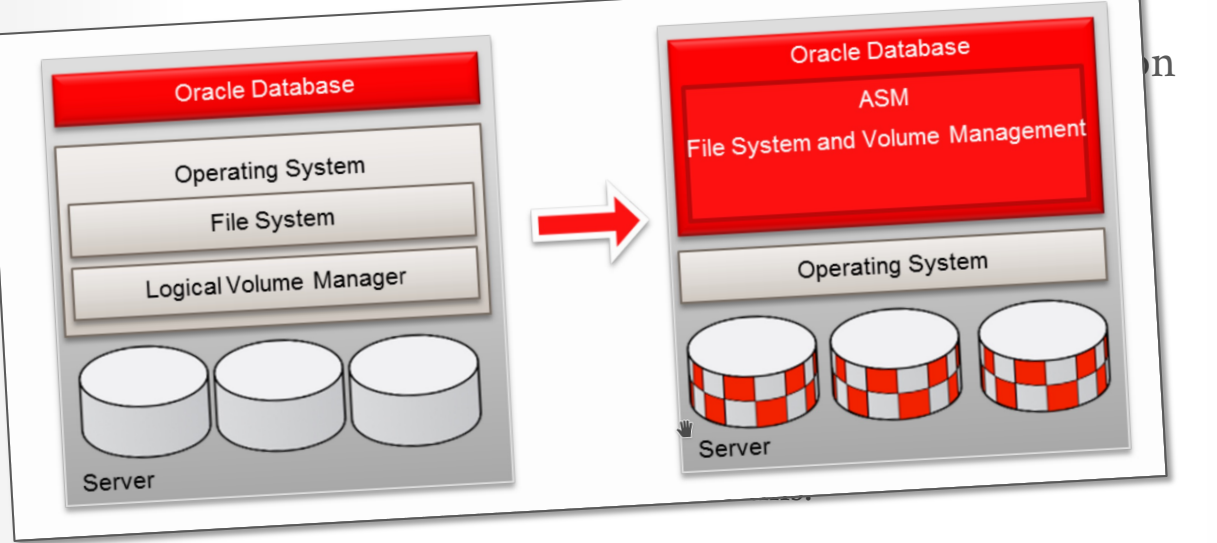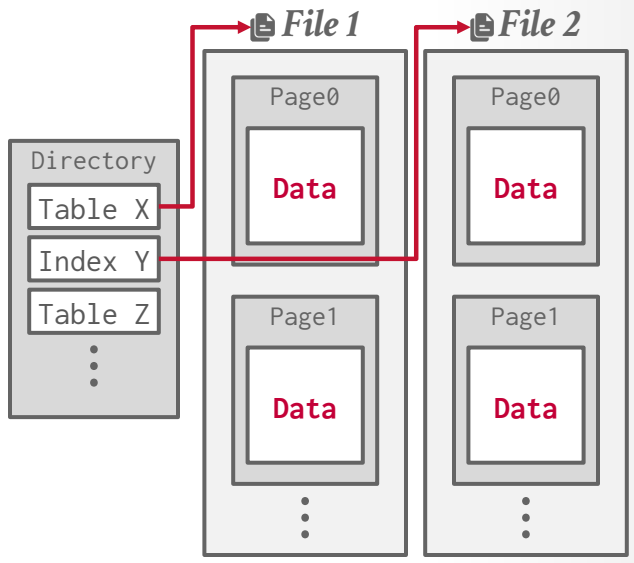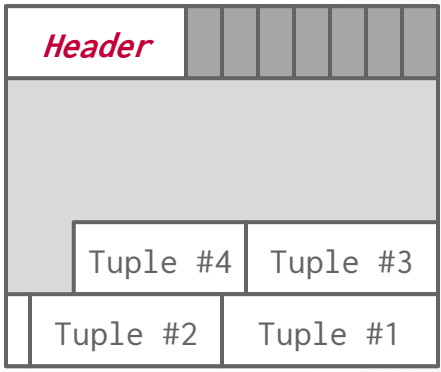Lecture #03: Database Storage (Part I)¶
约 429 个字 1 行代码 6 张图片 预计阅读时间 2 分钟 共被读过 次
15-445/645 Database Systems (Spring 2025)
Carnegie Mellon University
Prof. Jignesh Patel
1. Storage Hierarchy¶
Key Concepts:¶
- Disk-Oriented DBMS: Primary storage is non-volatile disk.
- Volatile vs. Non-Volatile Devices:
- Volatile (Memory):
- 🚨 Data lost on power loss (e.g., DRAM).
- Byte-addressable, fast random access.
- Non-Volatile (Disk):
- 💾 Data retained on power loss (e.g., HDD, SSD).
- Block/page addressable (e.g., read 4KB pages).
- Optimized for sequential access.
Latency Comparison (Humanized Scale):¶
- If L1 Cache = 1 second:
- SSD read ≈ 4.4 hours
- HDD read ≈ 3.3 weeks
2. Disk-Oriented DBMS Architecture¶
Components:¶
- Buffer Pool: Manages data movement between disk and memory.
- Execution Engine: Executes queries by requesting pages from the buffer pool.
Key Design Goals:¶
- Handle databases larger than memory.
- Minimize disk stalls (optimize sequential access).
3. DBMS vs. OS¶
Why DBMS Avoids OS Virtual Memory (mmap):¶
- 🚫 Page Faults Block Execution: DBMS loses control over I/O scheduling.
- Better Alternatives:
madvise(): Hint OS about future page accesses.mlock(): Prevent OS from swapping pages.msync(): Force flush pages to disk.
Lesson: "The OS is not your friend."
4. File Storage¶
Basics:¶
- DBMS stores databases as files (single or multiple).
- Storage Manager:
- Manages files as a collection of pages.
- Tracks free space, read/write status, and page types.
Example: SQLite¶
- Uses a single file for simplicity.
5. Database Pages¶
Types of Pages:¶
- Hardware Page: 4KB (atomic write guarantee).
- OS Page: 4KB (or 2MB/1GB for x64).
- Database Page: 1KB–32KB (configurable).
Page ID Management:¶
- Unique page ID per page.
- Indirection layer maps IDs to file paths/offsets.
Default Page Sizes:
- PostgreSQL: 8KB
- MySQL: 16KB
- SQLite: 4KB
6. Heap File Organization¶
Definition:¶
- Unordered collection of pages (tuples stored randomly).
Page Tracking Methods:¶
- Linked List:
- Header page tracks free/data pages.
- Sequential scan required for page lookup. - Page Directory:
- Special directory pages track data page locations and metadata.
7. Page Layout¶
Slotted Pages (Most Common):¶
- Structure:
- Header tracks slot count and free space offset.
- Slot Array maps slots to tuple offsets.
- Tuples grow from the end backward; slots grow forward.
Example:
- Adding a new tuple:
1. Allocate slot in the slot array.
2. Write tuple data from the end of the page.
- Deleting a tuple:
- Mark slot as unused; free space can be reused.
8. Tuple Layout¶
Components:¶
- Header:
- Visibility info (concurrency control).
- NULL bitmap. - Data: Attributes stored in schema order.
Example:
Denormalized Tuples:¶
- Pre-join: Store related tuples (e.g., joined tables) in the same page.
- Pros: Fewer I/O operations for common queries.
- Cons: Updates become more complex.
Key Takeaways¶
- Disk vs. Memory: Optimize for sequential access to minimize latency.
- Page Management: Slotted pages dominate for flexibility.
- DBMS Control: Avoid OS interference for performance and correctness.
Next Lecture: Log-Structured Storage, Index-Organized Storage, and Catalogs 📚





